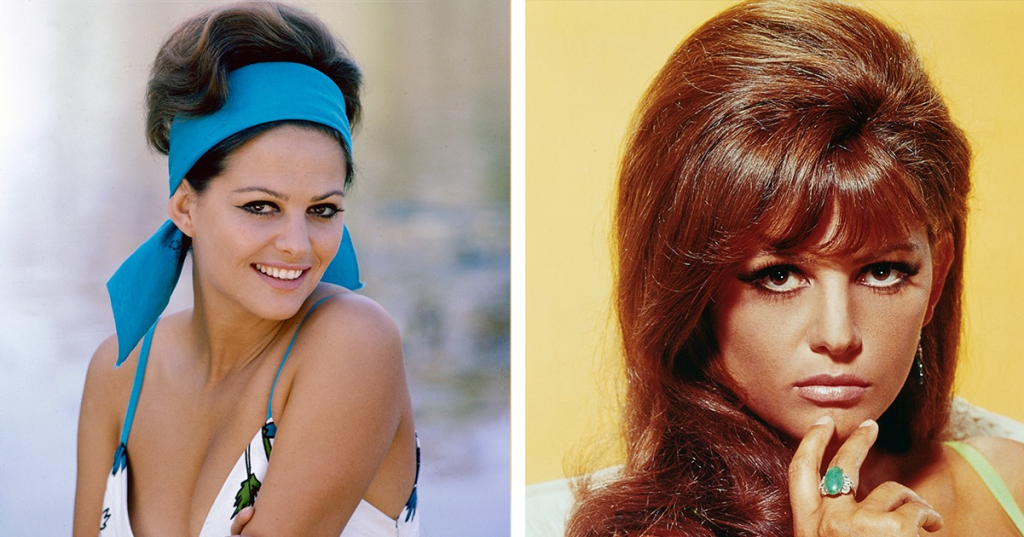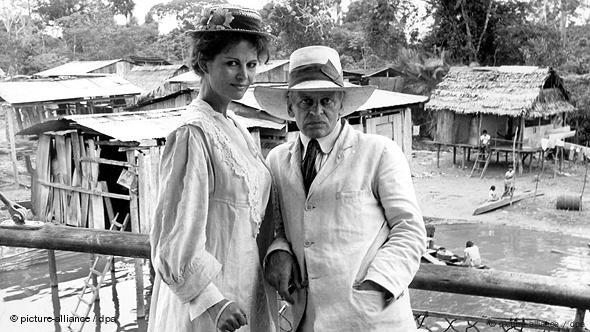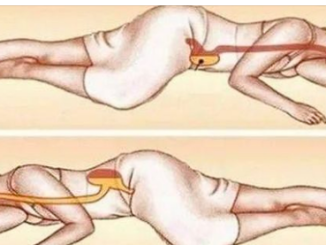
Claudia Cardinale is Italy’s counterpart to France’s Brigitte Bardot. She quickly rose to stardom to almost just as quickly disappear from the scene later on. Now, Claudia Cardinale celebrates her 85th birthday.
The Italian star was originally discovered at a beauty contest held in 1957 by the Unitalia film company. The “most beautiful Italian woman of Tunis” subsequently won a trip to the Venice Film Festival that was to become a decisive turning point in her life. The sultry young woman was born on April 15, 1938, in Tunis, the capital of Tunisia. Her mother was French, and her father Italian.
In 1958, Cardinale, known as CC, played her first role in “Goha” opposite Omar Sharif before being trained as an actress at the Italian Film Academy in Rome. Her talents as an actress renowned for her dauntless rambunctiousness gained her fame, and her gaze into the camera became legendary.
Famous director Luchino Visconti gave her minor roles in “Rocco and his Brothers” (1960), as well as in the historical drama “The Leopard” (1962) with Alain Delon. As she later recounted in a biographical interview, she rebuffed all of her famous film partners, Jean-Paul Belmondo, Marcello Mastroianni, Alain Delon and Burt Lancaster.

A beauty queen turned into a film diva
Cardinale is Italy’s counterpart of Brigitte Bardot. But in contrast to Bardot, Cardinale never appeared nude in a film: “I always thought it was more erotic to leave some room to imagination, hinting at things rather than showing everything,” she told the German magazine Stern in 2014.
CC achieved her breakthrough with her performance in the highly popular Italo western “Once Upon a Time in the West” (1969). The classical western directed by Sergio Leone and starring Henry Fonda and Charles Bronson was shot in Rome’s Cinecittà studios and in Spain with some scenes set in Utah’s Monument Valley. The film that flopped in the US only acquired cult status in Europe.

CC’s career already saw a downswing in the 1970s. She then turned to television films, especially entertainment films where she showed some talent as a comedian. She got her last main role in a movie in 1971 when she starred opposite her main rival, Brigitte Bardot, in the Italo western comedy “Frenchie King.”
Spending time in a jungle with Werner Herzog
Ten years later, CC starred in German director Werner Herzog’s historical film “Fitzcarraldo” (1981). Although Claudia Cardinale had a difficult time enduring the bouts of anger of her eccentric film partner Klaus Kinski, she greatly enjoyed shooting and working with director Werner Herzog: “Being in the middle of the jungle with insects all around me and nothing to eat was one of my most wonderful adventures,” she later stated.
Claudia Cardinale and other heroines of European film
Claudia Cardinale is seen as Italy’s counterpart to France’s Brigitte Bardot. The actress who became a star in the 1950s and 60s now celebrates her 85th birthday.
Claudia Cardinale
She’s the youngest of Italy’s three major female stars. Claudia Cardinale worked with outstanding directors like Luchino Visconti and Federico Fellini. She fascinated audiences with her charming smile and acting skills in westerns, among them “Once Upon a Time in the West” and “The Professionals” (pictured).
Gina Lollobrigida
One of the most highly acclaimed European stars of the 1950s and 60s was Gina Lollobrigida who was born in the East of Rome in 1927. “Lollo” even made it to Hollywood where she was equally showered with praise. In the 1970s, however, she withdrew from showbiz.
Sophia Loren
Another Italian actress, Sophia Loren, who was a few years younger than Lollo, became her fiercest rival. The mutual hatred and jealousy of the two stars was a frequent topic in tabloids. In contrast to Lollobrigida, Sophia Loren continued to perform in movies even as an older woman.
Brigitte Bardot
During the same time, another sexpot rose to stardom in France with movies like “And God Created Woman” and “Love is my Profession.” Brigitte Bardot, the superstar of the Grande Nation, withdrew from film production in the 1970s to devote herself to animal rights causes.
Catherine Deneuve
A decade later, Bardot’s compatriot Catherine Deneuve broke onto the film scene. Deneuve differed much from both Loren and Lollo by playing roles as aloof and myterious women early in her career. Deneueve’s talent as an actress guaranteed her success throughout her life.
Romy Schneider
The two decades between 1960 and 1980 were also the golden era of German-French actress Romy Schneider. Born in Vienna, she made her breakthrough in the German-speaking world as “Sissi” before moving to France. In Paris, she became one of the most charismatic and impressive actresses of European film scene. But in her private life, she was anything but lucky. She died in 1982.
Penélope Cruz
One of the most famous Europen actresses in recent decades is Spanish actress Penélope Cruz. Cruz started her career in her home country before achieving fame in other European countries and, finally, Hollywood. Her performances received a lot of acclaim, especially in films by director Pedro Almodóvar, among them “Volver” (pictured).
Irene Papas
After 1945, actresses from smaller European nations were able to conquer the hearts of audiences across Europe. One of them was Irene Papas who is also renowned as a singer in her home country, Greece. She celebrated her biggest success in “Zorba the Greek” (1964) before also working in other European countries, and in Hollywood.
Tatjana Samoilova
While films from Italy, France, Germany and England dominated the film scene during the postwar era, it should not be forgotten that eastern Europe had much to offer too. One of the biggest female stars of Russian film was certainly Tatjana Samoilova who achieved world fame with the movie “The Cranes are Flying” (1957).
Krystyna Janda
Polish actress Krystyna Janda became known in the 1970s for her performances in films by Polish director Andrzej Wajda. She then performed in international co-productions with stars like Lino Ventura. In her home country, Krystyna Janda is also known as a singer and an an author.
In 1993, CC received a Golden Lion for lifetime achievement at the Venice Film Festival to be followed in 2002 by an “honorary bear” at the Berlinale. The spirited actress performed in more than 100 films.
In 2017, CC once again drew attention at an international film festival. A photo depicting her as a young actress embellished a placard in Cannes where she had often been invited as an honorary guest. On April 15, Claudia Cardinale will turn 80. Happy birthday!
This article was originally published April 15, 2018 and updated.
My 4-Year-Old Son Was Distressed Every Time My MIL Babysat – When I Discovered the Reason, I Got Revenge

Working as a nurse, Zoe often relied on her mother-in-law, Denise, to babysit Leo, her son. But when the little boy becomes visibly shaken by his grandmother’s presence, Zoe has to question the old woman’s actions, only to discover that Denise has a hidden agenda.
I had always thought that my mother-in-law, Denise, was a little overbearing, but I chalked it up to her just being protective of my son, her only grandson, Leo.
She was one of those women who carried herself with a certain authority that made you straighten your back and rethink your words. This had become more pronounced when Jeremy, her husband, passed away a few years ago, allowing Denise to reclaim her role as head librarian of the local library.
“Why shouldn’t I?” she asked Andrew, my husband, one day. “I have time now, so there’s no need to just have my part-time role there. And I can have my book club meetings at the library, too.”
“Okay, Mom,” Andrew said. “You do whatever you want.”
She wasn’t mean, exactly, but Denise had a way of making you feel small without even trying. But still, she lived two roads away and was always willing to babysit Leo whenever I had a shift at the hospital, and considering Andrew’s unpredictable hours at the law firm, Denise usually had to step in often.
“It’s what grandmothers are for, right, Zoe?” she would say whenever I asked her to come over.
And despite how her moods could shift without a moment’s notice, she was reliable and didn’t complain about it once.
But lately, Leo had been acting strange whenever Denise came over. At first, it was small things. He would cling to my leg a little longer than usual when I tried to leave or hide behind the couch when he heard her car pull up in the driveway.
I thought that my son was just going through a phase, or maybe even a bit of separation anxiety. I had seen it all the time with the kids in my ward, especially when they woke up and their parents weren’t in sight.
But then, last week, right before I was about to leave for a night shift, he started crying.
“I don’t want Grandma to stay with me!” he blurted.
Big, fat tears rolled down his cheeks, and he clutched my scrub with a grip that seemed stronger than a grown man’s.
I knelt beside him, brushing a lock of his blonde hair from his forehead.
“But why, sweetheart?” I asked gently. “Grandma loves you. And she always brings you treats. Remember the brownies and ice cream from last week?”
My son’s eyes darted to the doorway as if expecting her to walk in at any moment.
“Because… Grandma acts strange,” he said, his eyes wide.
I was about to press him further because I needed to know what was going on. But moments later, Denise’s familiar, clipped footsteps echoed down the hallway. Leo bolted off to his room.
“What’s going on?” Denise asked as she set her purse down on the hallway table. “Where’s my grandbaby?”
“Nothing,” I said quickly. “He ran to his room to play with his toys. Andrew is away for the next two days. He’s meeting with a client and running through a case.”
Denise nodded.
I left for work, but I couldn’t shake the feeling of unease that settled in my stomach. I spent the entire night running between patients and thinking about Leo’s words.
“Grandma acts strange.”
What did that even mean to a four-year-old?
When I got home the next morning, I found my son sitting on the couch, staring blankly at the TV. His favorite cartoons were playing, but he wasn’t watching them. Instead, his eyes were red and puffy, like he had been crying all night.
“Leo?” I said slowly. “Did you sleep at all?”
He shook his head.
“No, Mommy,” he said. “I stayed up. I didn’t want to sleep.”
“Why not?” I asked, even though I could already feel my heart sinking.
I pulled one of the blankets under the coffee table and wrapped Leo in it, hoping if he felt safer, he would talk.
“Because Grandma scares me,” he said, his hands clutching his teddy bear tightly.
I felt a wave of panic wash over me.
“Scares you? What happened, honey? What did Grandma say or do?”
“She keeps trying to put something into my mouth,” he said. “She chases me with it, and it’s scary.”
“What is she trying to put into your mouth, sweetheart?” I asked, my voice tight as I strained to show my emotions.
Leo hesitated.
“Cotton buds,” he said. “You know, what you clean my ears with? She said that she wants to put my spit in the tube. I don’t like it. I don’t want it.”
My blood ran cold. Ever since Leo’s accident a few months ago, where he fell off his bike and landed himself with a broken arm, he’s been terrified of doctors, needles, and anything that reminded him of his time in the hospital.
The thought of Denise running around the house with a cotton swab and a test tube made my blood boil. Why was she trying to get my son to take a DNA test?
“Where’s Grandma?” I asked Leo.
“In the guest room,” he said.
I marched to the guest room and found Denise sleeping peacefully, oblivious to the screaming match that was about to come. Without hesitation, I shook her awake.
“Wake up, we need to talk,” I said.
“What’s going on?” she asked, blinking away her sleep.
“Leo just told me that you’ve been trying to swab his mouth for a test? Why are you traumatizing my son? Why do you want him to have a DNA test?” I demanded.
Her eyes widened, and for a moment, she looked like she was going to deny it.
“I’m sorry,” she said, sitting up. “I didn’t mean to frighten Leo. I’ve just been wondering about something…”
“What? What would possibly be so important that you’d do this behind my back?”
“His hair,” she said simply. “Nobody has had blonde hair like that.”
“You think that my son isn’t Andrew’s because of his hair color?” I asked.
“I know it sounds crazy, but it’s been gnawing at me. I just needed to know, but I didn’t want to accuse you…”
“I can’t believe that you would go to such lengths, Denise.”
“I didn’t know what to think. I’m sorry, Zoe,” she said.
“Please leave, Denise,” I said. “I need time to process this. And I need to focus on Leo.”
She nodded, looking defeated.
Over the next week, things were tense between Andrew and me. While she drove home on the day of the confrontation, she had phoned Andrew and told him everything, firmly securing some seeds of doubt.
“I think we should do the test,” he quietly said one day, not meeting my eyes.
I stared at him, hurt.
“You really think that’s necessary? You believe what your mother is implying?”
“It’s not that I believe it,” he said. “But if we do the test, we can put this all to rest. No more doubts, no more accusations. What if Leo was switched at birth?”
“I had a home birth!” I exclaimed. “You would have remembered if you were here and not in court.”
I sighed.
“Alright,” I said after a moment. “I’ll do the test for Leo, but on one condition.”
“What condition?” he asked.
“If I’m going to do this to prove our son is yours, then you’re going to do a test too. To prove that your father is really your father. Denise needs to know what this feels like.”
Andrew’s eyes widened, shock registering on his face from my request. “What? Why would you even suggest that?”
I could feel his brain overthinking it, but I also knew that he was trying to view the situation from my point of view.
I leaned forward, my voice firm, “Because your mother is the one who’s throwing accusations around. If she’s so obsessed with bloodlines, then maybe she should be sure of her own. So, if you want me to take a test, then you’re going to take one too.”
Andrew hesitated, clearly taken aback by my demand. But after a moment, he nodded. “Okay. If that’s what it takes, I’ll do it.”
A few days later, the test results came back. As expected, the test confirmed that Leo was indeed Andrew’s son.
But there was also another revelation that nobody saw coming.
It turned out that the test results for Andrew showed that his biological father wasn’t the man he had called Dad his entire life.
“What the hell, Zoe?” he said out loud.
“This is a conversation for you and your mother,” I said offhandedly.
As much as I wanted to know the truth and to know about Leo’s biological grandfather, I didn’t want to get caught up in Denise’s drama any further. No, thank you. I had a son to focus on. And there was just something about how Denise acted that I wasn’t going to forgive soon.
But eventually, my curiosity gave in and I asked Andrew about his conversation with his mother. It turned out that she had an affair in her youth, resulting in Andrew.
“She said that she had always suspected it, but she didn’t dare do a DNA test while my father was alive. Just imagine, I’ve gone my entire life thinking that my father was just that, my father. But he wasn’t, not biologically. I can’t forgive her, Zoe.”
My heart broke for him.
“So, what does this mean?” I asked.
“It means that we take our time and space away from my mother. And we focus on our son. She’s the one who betrayed our family. Not us,” he said.
I nodded, ready to move on and focus on our family.
Apparently, Denise’s guilt had eaten away at her for decades, leading her to project her insecurities onto me and our son.
What would you have done?
If you enjoyed this story, here’s another one for you |
My MIL Intentionally Sent Me Faded Flowers for My Birthday with a Nasty Note
Emily has always had issues with Denise, her mother-in-law. But when her birthday rolls around and her husband, Evan, has to go away on a business trip, Emily is left to entertain herself. Denise, on the other hand, takes matters into her own hands and gives her daughter-in-law a horrible birthday gift.
I know we all have problematic mother-in-law stories, but my goodness. I’ve been dealing with Denise for well over five years now. My husband, Evan, and I come from very different backgrounds, which were the first ingredients for a disaster.
Evan grew up in an affluent suburb, while I was raised by a single mom in a rough neighborhood where clothing was stolen straight off the line.
And to make it even worse for Denise? I’m a mixed-race woman, which Denise always looked down on.
“You definitely get your hair from your mother, then,” she would say to annoy me.
Despite Evan’s love and constant defense of me, Denise never missed a chance to remind him that he could’ve done better.
“I’ll bet you a spa day, Emily,” Evan told me one day as we were driving to his mother’s house for dinner. “She’s going to mention something about an ex-girlfriend or about me having done better.”
“You’re on,” I said.
Naturally, he was correct because not even fifteen minutes into the dinner, Denise was talking about an ex.
Read the full story here.



Leave a Reply